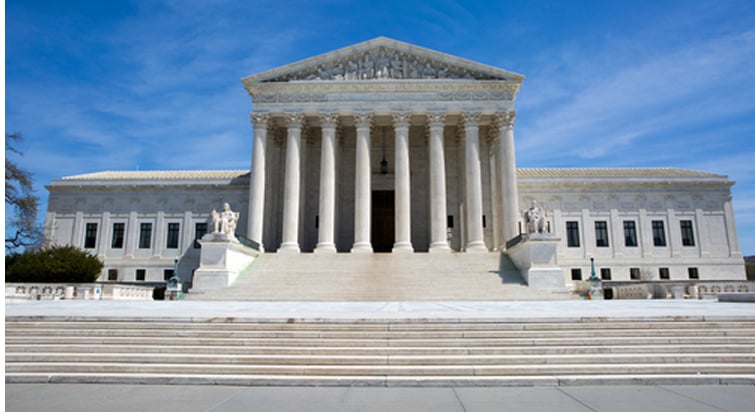
It's fair to say the supreme court receives far less press than the presidency and congress. Yet the court still wields considerable power in 21st-century America. However, it wasn't always this way. The judicial system was practically an afterthought of the founding fathers until 1801 when John Marshall became Chief Justice. His leadership of the highest court in the land came to the spotlight in Marbury v Madison (1803) when he ruled that Madison's actions of denying Marbury his commission for appointment as a judge was illegal but that it was also unconstitutional for Marbury to bring his case to the court itself. Marbury should have petitioned a lower court. Thus by restraining the court's power in this case, Marshall actually granted it far more power for the future through the principle we now know as judicial review. Judicial review examines the actions of the other branches of government and deems if these actions are in line with the constitution.
The role of the SCOTUS has vastly grown in the two centuries that have followed. However, not all of this expansion of power has benefited the country. In particular, the reconstruction period following the Civil War saw the court apply some of the new amendments in some not-so-just ways. The 14th amendment in particular underwent substantive due process as the Court started to peel back some of congress' original intentions. The privileges and immunities clause was stricken following the Slaughterhouse cases (1873) since the Court found it pertained to federal citizenship but not state citizenship. Furthermore, Santa Clara County v. Southern Pacific Railroad Co. (1886) twisted this amendment to apply to corporations having the right to free speech. The nail in the coffin came from the principle of "separate but equal" in Plessy v Ferguson (1896), which established a precedent for the continued maltreatment of African Americans that lasted throughout the Jim Crow era and beyond.
Today, the Supreme Court is polarized along ideological lines similar to congressional representatives. A cases's ruling can typically be predicted before the hearings, but there are some exceptions. Some justices such as interpret the constitution in a straightforward manner as the founding fathers intended. Others, such as the late Ruth Bader Ginsburg, choose to see it as a breathing document which evolves with the country, "We don't have the constitution that was written 1787 or even 1791...'We the People' composed of a very small part of the people." Despite its checkered past, the Supreme Court of the United States remains the most influential judicial branch in the world.
P.S. If you are ever curious about a particular case and want to get a condensed summary of its proceedings, I definitely recommend Oyez!
https://www.oyez.org/
Sources:
https://www.oyez.org/cases/1789-1850/5us137
https://www.oyez.org/cases/1850-1900/83us36
https://www.oyez.org/cases/1850-1900/118us394
https://www.oyez.org/cases/1850-1900/163us537

No comments:
Post a Comment